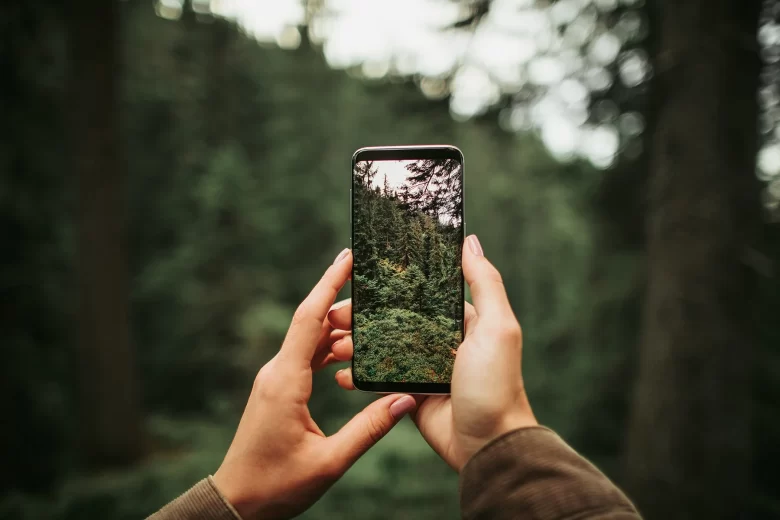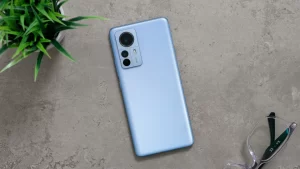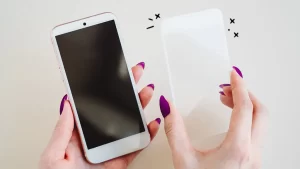Choosing the right camera phone can help you take great photos. A great camera phone has powerful hardware and advanced software that work together to produce photos that are as good as those from professional cameras. The camera sensor, lens quality, and image processing algorithm are the key components that affect the overall performance of the camera. Knowing these things can help you find a phone that stands out in a crowded market. If you’re really into mobile photography, you’ll want features like optical image stabilization, high dynamic range (HDR), and low-light shooting capabilities.
1. Understand Camera Sensors and Megapixels
The camera sensor is the most important part of any camera, even your smartphone’s. Many people are interested in megapixels, but the size and quality of the sensor are just as important, if not more important. In low light, a larger sensor absorbs more light, resulting in better photos. Images with high megapixels can be sharper and have more detail, but if the sensor is bad, the results can still be poor. When comparing camera phones, it’s important to look at more than just the megapixel count. The sensor size also has a big impact on the quality of the photos.
2. Look at the Quality and Aperture of the Lens
The quality of the lens and the size of the aperture are also very important to the performance of a camera phone. A good lens with a large aperture allows more light to reach the sensor. This results in sharper, brighter photos, and the shallow depth of field makes it perfect for portraits. Aperture is usually expressed in f-numbers, such as f/1.8 or f/2.2; a lower number means a larger aperture. A large aperture is ideal for low-light environments and creates a bokeh effect where the subject is sharp and the background is blurred. By looking at this, you can find a phone that is suitable for any photography situation.
3. Understanding Zoom
The zoom function of a camera phone is very important, especially for people who like to photograph things in the distance. When you use optical zoom, your camera lens enlarges the image without losing quality. When you use digital zoom, the image is cropped and the pixels are larger, often making the image less clear. A phone with multiple lenses, such as a telephoto lens and an ultra-wide lens, gives you more options and better zoom results. For photography enthusiasts, phones with optical zoom take better photos than phones with digital zoom, making them ideal for taking clear, detailed photos from a distance.
4. Check out Night Mode Features
One of the reasons high-end camera phones stand out is how well they perform in low light. A phone’s sensor size, aperture, and image processing capabilities all affect how well the phone takes clear, noise-free photos in low light. Many high-end models now have a special feature called “night mode” that automatically makes photos taken in low light look better. This mode uses long exposure times and advanced software algorithms to brighten the image, reduce noise, and maintain clarity. For photographers who often shoot in different lighting conditions, a phone that performs well in low light is a must-have.
5. Considering the Front Camera for Selfies and Vlogging
People usually focus more on the main camera, but for photographers who like to take selfies or create vlogs, the front camera is also important. Smartphones these days come with good front-facing cameras that take photos and videos that are clear and full of detail. You can get higher-quality content with portrait mode (which blurs the background well) and 4K video recording. For those who value the quality of their selfies, some phones even come with dual front-facing cameras or advanced AI software that can improve exposure and skin tone.
6. Role of Video Capabilities in Camera Phones
For those who love both photos and videos, a camera phone’s video capabilities are just as important as its photo capabilities. Your videos will be even better if you take advantage of features like 4K or 8K video recording, slow-motion recording, and video stabilization. The phone also lets you manually adjust video settings like exposure, focus, and frame rate, giving you more creative freedom. Some high-end models also support new video features like Dolby Vision HDR, which allows for better colors and contrast for a more cinematic look. Checking out these features will help you make sure you’re choosing a phone that’s right for your photos and videos.
Conclusion
To find the best camera phone for photographers, you’ll need to take a closer look at both the hardware and software features. Every aspect of photography, from the size and quality of sensors and lenses to advanced image processing and video capabilities, makes the overall experience better. By understanding what makes a good camera phone and comparing different models based on your needs, you can be confident that the phone you choose will improve your mobile photography. Whether you opt for a high-end model with the latest features or a mid-range phone with good performance and a low price, the right camera phone can help you take beautiful photos that you can proudly share.
FAQs
1. What to look for when it comes to camera phones?
A good camera sensor, large aperture lens, optical image stabilization (OIS), advanced image processing software, and good low-light performance are some of the most important features. These features have a major impact on photo quality and are a must-have for photographers who want to take stunning photos.
2. Is the higher the pixels of a camera phone, the better?
This wasn’t always the case. Images with higher megapixels may be more detailed, but the quality of the sensor, lens, and image processing is just as important. Camera phones with fewer megapixels but larger sensors and better image processing generally take better photos, especially in low light.
3. What is the difference between digital zoom for mobile phones and optical zoom?
When you use optical zoom, your camera lens enlarges the image without losing quality. When you use digital zoom, the image is enlarged by cropping and expanding pixels, which often makes the image less clear. Optical zoom works better when photographing distant objects because it preserves the sharpness and detail of the image.
4. How does Night Mode help you take better photos in low light?
Night mode uses long exposure times and advanced software to improve photos taken at night or in low light. It brightens the image, reduces noise, and preserves sharpness, making it easier to take clear, detailed photos in low light. People who love taking photos and often shoot at night or indoors will find this feature very useful.
5. If I mainly use my phone to take photos, should I consider getting a front-facing camera?
Yes, the front-facing camera is very important if you are into video calling, selfies, or vlogging. Having a good front camera with features like portrait mode, 4K video recording, and further AI enhancements will make your photos and videos look better and more professional.




